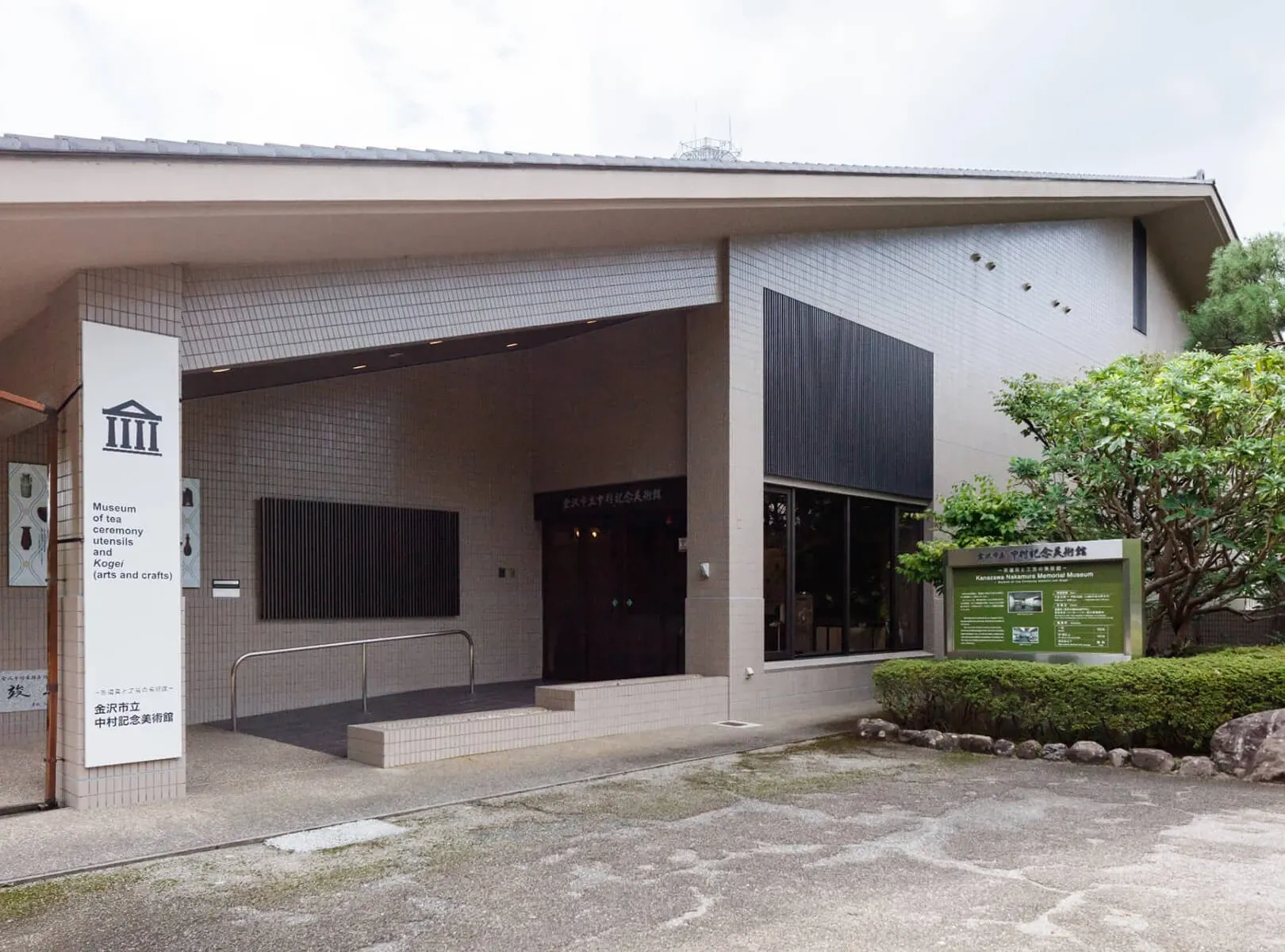茶入筆記 vol.41 金澤市立中村記念美術館:唐物肩衝 「利休小肩衝」,千利休、前田利家、前田利常傳承 - Kanazawa Nakamura Memorial Museum: Karamono Katatsuki Chaire “Rikyū Ko-Katatsuki” – Heirloom by Sen no Rikyū, Maeda Toshiie, and Maeda Toshinaga
- SACA

- Jun 3
- 3 min read

唐物肩衝茶入 利休小肩衝
南宋(13~14世紀)
寸法 口径3.0 胴径5.7 底径2.4 本体高6.3
據隨附的傳世古卷記載,此器最初為千利休所持,命名為「小肩衝」,後傳予加賀藩初代藩主前田利家。至其子、加賀藩第二代藩主前田利長時,因家臣橫山長知建功卓著,乃將此茶入賜予橫山家,遂由橫山家代代相傳,延續至昭和戰後時期,流傳歷程清晰可考。
此件為南宋至元代所製的唐物茶入,屬肩衝形制,惟體量偏小,故有「小肩衝」之稱。釉色呈溫潤的飴色,濃淡交錯,釉面富有層次變化,構成如山水般的自然景致,是觀賞的重點所在。其胎釉質感極富時代風格,尤顯南宋末至元初中國高級實用品的典雅氣質。


由於自千利休起即傳入加賀前田家,且歷經利家、利長兩代藩主之手,後又由家臣橫山氏珍藏四百餘年,遂成為金澤茶道文化的象徵性名物之一,具極高之歷史、美術與文化資料價值。
作為茶道具,此器不僅具有利休命名與傳承之權威性來源,亦充分展現唐物茶入在日本本土接受與再詮釋的歷程。其「小振り」的器形與親和之姿,深得茶人賞玩之道,亦契合千利休對「侘」與「幽玄」之美的極致追求。

唐物肩衝茶入 利休小肩衝
からものかたつきちゃいれ りきゅうこかたつき
文化財指定 金沢市指定文化財
年代 南宋-明時代 (13-15世紀)
陶磁器
寸法 口径3.0 胴径5.7 底径2.4 本体高6.3
付属する巻物によれば、千利休から加賀前田家初代利家が入手、二代利長のとき手柄を立てた重臣横山家二代長知が拝領したと伝え、昭和の戦後まで同家に伝来した。小振りの肩衝茶入。潤いのある飴色釉の濃淡が景色を見せる。
利休小肩衝は、慶長2年(1602年)、加賀藩の重臣横山家二代長知(ながちか)が、功により二代藩主前田利長(としなが)から拝領し、戦後まで代々、同家に伝来しました。千利休(1522年~1591年)がかつて所持して「小肩衝」と名付け、初代藩主前田利家(としいえ)に利休から譲られたと伝わる由緒ある品です。南宋~元代(13~14世紀)に中国で作られたもので、唐物茶入らしい風格の中にも小振りの姿に親しみがあり、潤いのある飴色の釉が濃淡をなす景色が見所となっています。金沢に400年以上の長きにわたり伝来し、金沢の茶道の歴史を伝える、由緒ある茶入の名作であり、美術品としても歴史資料としても価値が高いといえます。

Chinese Tea Caddy in Katatsuki Shape
Rikyū Ko-Katatsuki
Southern Song Dynasty (13th–14th century)
According to the accompanying historical scroll, this tea caddy was once in the possession of Sen no Rikyū (1522–1591), the seminal tea master of the late Muromachi to Azuchi-Momoyama periods. He bestowed upon it the name Ko-Katatsuki(“Small Katatsuki”). The vessel was subsequently passed on to Maeda Toshiie, the first lord of the Kaga Domain, and later, during the tenure of his son Maeda Toshinaga—the second lord of Kaga—it was awarded to Yokoyama Nagachika, a senior retainer who had distinguished himself in service. Thereafter, the chaire remained in the Yokoyama family for generations, being carefully preserved until after the Second World War.
Produced in China during the Southern Song to Yuan dynasty transition (13th–14th century), this karamono (Chinese-origin) chaire exemplifies the refined aesthetics of imported ware highly prized by Japanese tea practitioners. Though it is of the classic katatsuki (shouldered) form, it is notably smaller in size—hence the designation Ko-Katatsuki. The surface is coated in a lustrous amber glaze, presenting nuanced tonal variations that create a scenic effect reminiscent of natural landscapes. These subtle gradations in glaze and the vessel’s compact, endearing proportions make it particularly prized among connoisseurs.
This chaire has been handed down in Kanazawa for over four centuries, serving as both an important artifact of the region’s tea culture and a testament to the historical continuity of chanoyu practice. As a tea utensil of impeccable provenance—once owned and named by Rikyū, and transmitted through the hands of the founding figures of the powerful Maeda clan—it possesses not only aesthetic refinement but also exceptional historical and documentary significance.
The Rikyū Ko-Katatsuki offers a window into the importation and reinterpretation of Chinese tea ceramics in Japan. Its delicate form and unassuming presence align perfectly with the wabi aesthetic ideals Rikyū so famously championed. As such, this tea caddy stands as a touchstone for the appreciation of karamono chaire and remains a symbolic vessel in the cultural memory of Kanazawa’s tea heritage.




























Comments